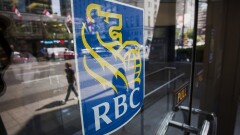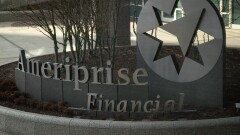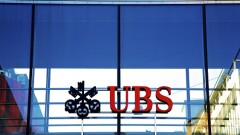Red? Blue? Or straight down the middle?
As the midterm election season reaches its final tense stages, wealth management firms, industry organizations and companies from supporting sectors have already made nearly $20 million in campaign contributions through political action committees.
A few have spent the maximum allowed for several dozen candidates or officeholders. Others have stayed out of PAC contributions entirely, avoiding politics or employing other means of donations.
Some firms support one party over another, while others are careful to give almost equally to Democrats and Republicans. Their outlays carry the potential to have long-lasting consequences for the firms, as well as the country.
“It’s very common for PAC contributions to facilitate lobbying,” says Brendan Fischer of the ethics and campaign finance watchdog group
To see which firms have contributed, and to which party, Financial Planning reviewed PAC contributions tracked by the
Some of the most-interesting findings:
Republicans received $11.7 million, or about 61% of the PAC donations, as the ruling party, but Democratic incumbents and challengers still took in $7.5 million.
UBS Americas, the largest-giving individual company PAC in the group, has already maxed out with nearly 50 candidates.
LPL Financial has spent the maximum allowed amount on PAC donations for eight candidates to the House of Representatives. The firm cites geographic location and a track record in business or legislation as among their factors in supporting various candidates.
FPA, the smallest donor included in the sampling of 50, has not given the combined primary and general election maximum of $10,000 to any candidate.
Follow the money
Company PACs get their campaign funds from individual contributions by employees and shareholders but not from the corporate treasury, according to Fischer.
The PACs, which also include member-financed trade and interest groups, may then donate up to $5,000 per election to federal candidates, he notes. The method represents only a subset of available methods for companies and individuals to make campaign-related donations, some more transparent than others.
Firms usually give PAC donations to lawmakers they see as “champions of their issues” or acting as a swing vote on a bill or appointment, along with contributions for members of relevant committees, Fischer says. Some firms cite geographic location and a track record in business or legislation as among their factors in supporting various candidates.
Advocacy groups support lawmakers who share their mission. Independent broker-dealer advocacy organization FSI and BD and insurance company-backed groups IRI and NAIFA fall into this category.
Other firms donate right down the middle. Charles Schwab enforces an equal split between Democrats and Republicans in campaign contributions it makes through its PAC, the company says. ETF champion Vanguard makes PAC donations to candidates in part “to take a stand for all investors,” according to the firm.
Out of 42 companies, Schwab, Fidelity, Vanguard, LPL, Northwestern Mutual, Lincoln Financial Group, TIAA, Citi and BNY Mellon provided statements about their approach to PAC donations, with the others declining to comment or not responding to inquiries. Goldman Sachs referred to its three-page company
FSI, IRI, NAIFA and the American Council of Life Insurers also gave statements on their reasoning and criteria for PAC contributions out of a group including four other trade and advocacy groups.
The data is effective Sept. 24 and came from records compiled on the
A few firms have more than one PAC, so only the larger of their PACs was included in the sampling, and the percentages to each party come from rounded figures and may not add up to 100% in some cases.
To see where wealth management and its supporting sectors have placed their donations for the midterms, scroll through our slideshow.

























